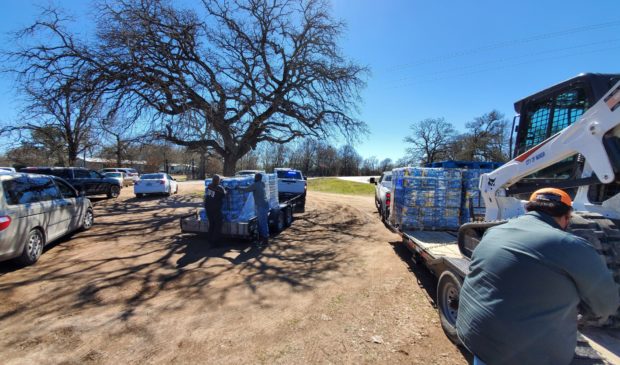Resilience hub initiative continues to evolve
Tuesday, November 16, 2021 by
Willow Higgins Winter Storm Uri, the extreme weather event that left an unknown number of Austin residents dead last February, inspired the initiative to create resilience hubs across the city that would act as a public resource in times of crisis. The initial idea of creating two centers independent of the energy grid to pilot the initiative has transformed into a more comprehensive, citywide network of facilities designed to serve the entire community equitably.
Representatives from the city’s Office of Sustainability and the Austin Independent School District briefed the city’s Public Health Committee last Tuesday on the project and its evolution. The hubs, which are being designed in collaboration with numerous local stakeholders and organizations, will use existing facilities that are already familiar and trustworthy to community members. The facilities will be retrofitted as either a 1) gathering hub, 2) relief hub or 3) sheltering hub. While all three tiers of resilience hubs are designed to help Austinites stay safe in times of crisis, gathering hubs will be a simpler operation, while sheltering hubs will be outfitted with many more resources. Relief hubs fall somewhere between the two.
Zach Baumer, the climate program manager at the Office of Sustainability, began the briefing by explaining how the committee has decided to put equity at the center of the program. Ideally, he said, everyone in town would be able to walk to a resilience hub within 15 minutes, which would require about 400 centers across town. Acknowledging that this is a lofty goal, he explained that they’re using the Centers for Disease Control’s Social Vulnerability Index, which measures a population’s sensitivity to natural hazards, to map out which parts of the city would benefit the most by having nearby resilience hubs. These areas, which Baumer said are mostly in East Austin, will be the committee’s first priority before expanding the network.
Gathering hubs would be a great resource for events like heat waves, Baumer explained. They’ll be equipped with electricity to charge up devices, free snacks and water, and trained staff to help navigate individual situations. Relief hubs, the next level up, will need more space to distribute water and food at a larger scale. They’ll also offer storage space, shower access and portable generators. Shelter hubs will be designed to handle the most extreme disasters and will have room to actually house people who need it. These facilities will have grid-independent power and a backup water system in the case existing infrastructure fails, like it did in Winter Storm Uri.
The team of people working to build out these resilience hubs plans to take on gathering hubs first. But before they begin the conversions, they have to decide where and what existing facilities will do the job. They’re looking at city buildings like libraries and recreation centers, AISD schools, community colleges and universities, local health clinics and more.
“The first step … which we started in the last week, is to do this baseline facility data collection,” Baumer said. “We’re taking all of these different types of facilities that are existing and entering them into this Google map with our draft of (gathering hubs, relief hubs and shelter hubs), sorting the facilities into those levels, and overlaying the social vulnerability index map to figure out where facilities are located with their existing kind of functionality.”
Doing that, Baumer said, will help them figure out where the gaps are and where they need to invest additional resources to ensure every Austinite has access to the resources they need.
“One of the things that I think is important that we talk about is the equity by design model,” said Matias Segura, AISD’s operations officer, who spoke at the meeting. “Really what we’re intending to do with this model is to really understand how our most underserved communities are being impacted (and) their lived experience. We have to be diligent in identifying where they are … and opportunities and ways to connect with them. And from there we can build out.”
Thanks to the American Rescue Plan Act, resilience hubs have $3 million in backing, which needs to be spent in the next couple of years. While the exact spending plan has yet to be nailed down, Baumer says they’ll spend the next few months continuing the data collection and mapping analysis. As they move into 2022, the team will shift focus to creating an advisory board, selecting facilities and doing community outreach. By the latter half of 2022, Baumer hopes to have a live and growing network of resilience hubs and to begin communicating to the public that disaster relief is available, should it be needed.
The Austin Monitor’s work is made possible by donations from the community. Though our reporting covers donors from time to time, we are careful to keep business and editorial efforts separate while maintaining transparency. A complete list of donors is available here, and our code of ethics is explained here.
You're a community leader
And we’re honored you look to us for serious, in-depth news. You know a strong community needs local and dedicated watchdog reporting. We’re here for you and that won’t change. Now will you take the powerful next step and support our nonprofit news organization?



